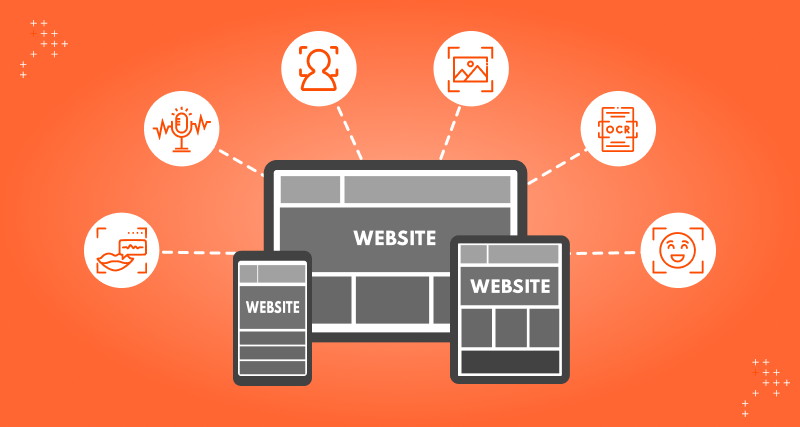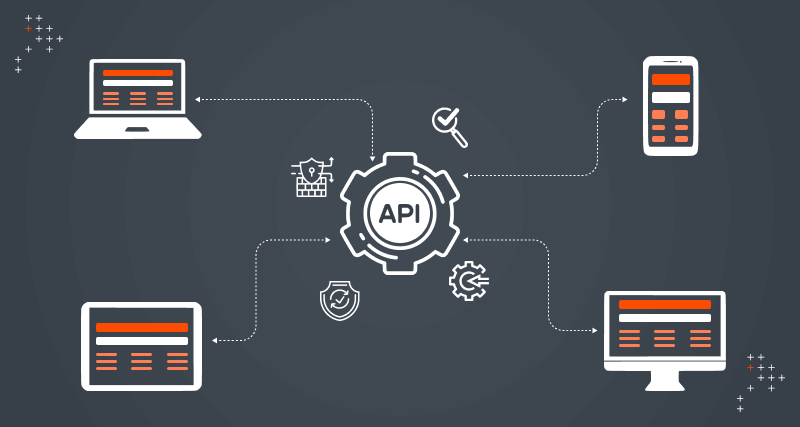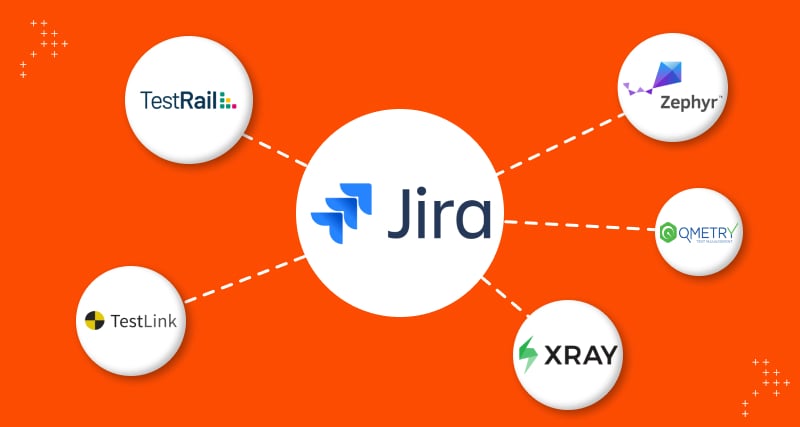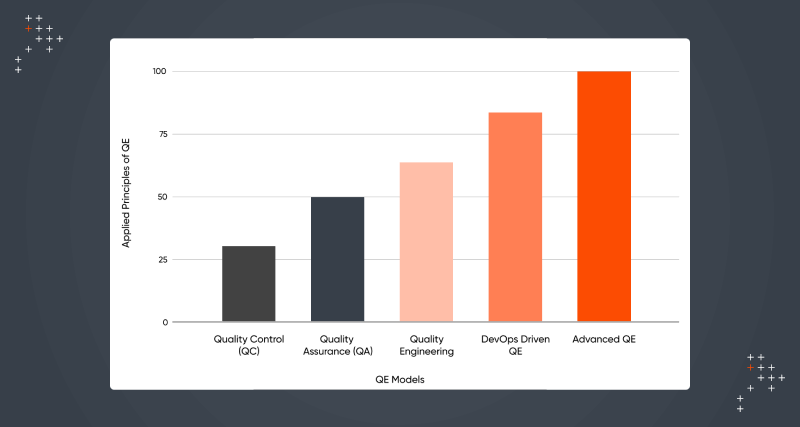Introduction
Artificial Intelligence (AI) and machine learning technologies utilize many applications across industries. These technologies are driving real change and helping businesses optimize their operations.
As a result, the AI market is expected to grow to a staggering $15.7 trillion by 2030. Significant milestones have also been achieved in terms of how AI can be used for web accessibility. Read more to learn how your organization can benefit from using AI for accessibility.
What Is Web Accessibility
Web accessibility is the practice of building inclusive web applications and making them equally accessible to every user, irrespective of their abilities and impairments. An essential part of web accessibility is to enable accessibility so that everyone can perceive, understand, navigate, interact and contribute to web applications seamlessly.
It can also be understood as a process to achieve the inclusiveness of a wide range of user categories from different conditions, geography, and abilities. The goal is to ensure that these users can benefit from any application without barriers.
What Is AI
AI is a branch of science that deals with intelligent machines and programs capable of mimicking human intelligence capabilities. It can perceive, learn, predict, or analyze.
Every day the growth and contribution of AI and its branches take considerable leaps in almost every field. This technology has driven change in healthcare, telecommunications, banking and finance, logistics and transportation, and entertainment.
How AI Works For Web Accessibility
With the increased integration of AI in digital products, the demand for utilizing it to support accessibility testing was recognized early. AI's biggest potential was perceived as a well-trained program's ability to identify data and propose numerous possibilities for any given problem.
When the same program is supplied with user requirements on accessibility and perfectly trained for inclusiveness, it can serve the more complex accessibility needs of end users. AI also has the potential to address several other challenges faced by impaired users.
Beyond this, analyzing an enormous amount of accessibility requirements and extracting possible solutions with human capacity takes time. But AI's sophisticated algorithms can handle this with extreme speed and accuracy.
AI and accessibility act as a support system by reducing obstacles, simplifying user actions, and giving an alternate approach to completing difficult tasks. For example, facial recognition is an AI-based alternative to typing passwords meant to benefit visually impaired users or users with injured arms.
AI-Based Solutions For Web Accessibility
Some of the AI-based solutions that support web accessibility are mentioned below.
Image Recognition 
Images are an integral part of the web. Every web application uses images to ensure better communication and presentation of content. But for a visual-impaired user, a page with images is very similar to a blank page.
To overcome this, technology giants started using image recognition functionality. Image recognition is a type of computer vision AI that can dynamically describe images with the help of an automatic alternative text feature.
Neural networks and image processing algorithms can help identify, categorize, associate, and index objects of interest within an image. Whenever an image is encountered in a web application, image recognition compares it with millions of pre-indexed images to generate dynamic descriptions. Screen readers use these descriptions.
The accuracy of the outcome is also growing with advancements in pre-indexed image data, upgrading techniques, and practical algorithms.
Facial Recognition 
Authentication is a mandatory process to access any secure web application. In most cases, users must enter a password, PIN, or pass a CAPTCHA test to ensure authentication. But for impaired users, handling the authentication process is a challenge.
Facial recognition is a category of biometric security that uses a face analyzer feature to identify a person's face. The technology measures facial features from different angles and analyzes the captured data from numerous photos of a person's face.
This technology learns from experiences and makes the right assumptions about recognizing the individual in front of the camera.
Facial recognition benefits impaired users by simplifying the authentication process and replacing CAPTCHA. Once the application recognizes that a person interacting with it is a human through the camera lens, there is no need to do a CAPTCHA test.
Speech Recognition 
The speech recognition feature is a boon for users with motor, cognitive, and learning impairments who prefer speaking to typing. It is an assistive technology that helps users perform actions like sending an email, placing an order, filling out a form, scrolling through the pages, searching for a product, initiating a call, and dictating text to type.
Speech recognition software uses Natural Language Processing (NLP) and Machine learning (ML) to recognize, understand and translate a user's speech into text. It receives the vibration of a user's speech as an electrical signal and converts it into a digital signal by eliminating the noise factor.
After that, the speech recognition software translates the digital signals into phonemes, which are further translated into understandable text.
This feature is also used in creating auto-captioning video content through ASR (Automated Speech Recognition) and AV-ASR (Audio Visual - Automatic Speech Recognition) technologies. This greatly assists hearing-impaired users and users who face accent or language understanding challenges.
Automatic Lip Reading 
Unlike the speech recognition feature, which understands the content solely from audio and visual clues to generate the text, Automatic lip reading (ALR) understands the content from the video to generate the text.
This feature captures the lip movements using computer vision AI frame by frame. Each frame captured is provided with a pre-defined feature value which is then mapped to the respective speech units. In the final step, the speech units are converted into captioning text.
Automatic lip reading is a great assistive technology for hearing-impaired users as it accurately translates real-time speech into understandable text. But there are still some parts of this feature that need improvement.
Thankfully, with years of training and massive data exposure, experts can expect the exceptional success of this feature in web accessibility.
Text Recognition 
Users with visual and learning impairments use screen readers or text-to-speech software to read web content aloud with their choice of voice and speed. When it comes to images, PDFs, and documents, there is an additional feature that makes the content available for reading. This feature is text recognition.
Text recognition, also known as Optical Character Recognition (OCR), extracts data from scanned images, documents, and PDFs to convert the data into readable text. This feature works by storing a variety of character patterns as templates and using pattern-matching algorithms.
These algorithms analyze and compare the text image with the stored patterns before converting it to readable text. Some advancements in this feature include Intelligent Character Recognition (ICR), which reads the text as a human does.
The technology processes data at many levels and analyzes image attributes like curves, formats, shades, and lines. Intelligent Word Recognition (IWR) is the same as ICR but processes the whole word. Similarly, Optical Mark Recognition (OMR) identifies the document's symbols, logos, and watermarks.
Text Processing 
Reading through a huge document or long web page is not easy for any user, especially those with learning impairments, attention or memory deficit, and low literacy skills. A better alternative for this scenario is automated text summarization which can be done with text processing.
Text processing helps shorten text abstracts by breaking complicated content into easy and understandable summaries. It uses machine learning models with reinforcement learning to automatically analyze electronic text, extract value, and generate a text summary.
This feature has already migrated from the extractive model to an abstractive model. The extractive model does the work of extracting the words from the original content to generate the summarization.
And the abstractive model generates summaries with its own words based on its understanding of the original content. This is a huge step in AI to think and create content of its own matching the value of the original content.
Emotion Recognition 
This level-up in AI-based solutions focuses on users suffering from behavioral disorders and autism. Emotion recognition, also known as Affective Computing or Emotion Intelligence Computing, can detect a user's emotional state based on facial expressions, body language, or voice tone.
It can detect, interpret, process, and simulate any human reaction based on pattern recognition techniques. By recognizing the user's current emotional state the responses to the users will be updated for better interaction.
AI-Powered Tools For Web Accessibility
The AI-powered solutions discussed above are integrated into tools that target providing support at specific steps of the accessibility process. The main goal is to ensure that users can access websites seamlessly.
There are also different categories of AI-based tools available to perform accessibility-supporting tasks, including:
- Accessibility testing tools that help in evaluating the accessibility issues on websites
- Accessibility automatic error fixing tools to monitor and fix the accessibility issues during website development
- Experience facilitating tools like screen readers that assist end users in using the website
A few tools can be used as plug-ins and standalone tools to perform specific tasks.
Deque

Deque products include axe DevTools, axe Auditor, and axe Monitor, each specializing in providing accessibility solutions. Deque has also launched axe Pro, which integrates machine learning technology to enable automated testing. This reduces the manual effort involved in identifying and fixing accessibility issues.
The ML technology of the tools works by using computer vision to identify semantic data, analyze visual contents, and extract it from the page to feed it into axe Pro’s guided testing tools. This data is then used for a completely automated accessibility analysis.
UserWay

UserWay is another AI-powered solution to ensure compliance with WCAG and ADA requirements without affecting the existing code. Userway has developed an automated widget that uses AI for accessibility.
It can automatically integrate into the website to scan web pages, identify accessibility issues, and highlight how the website can be improved for web accessibility.
Userway also follows a human-in-loop approach, which includes accessibility experts in decision-making, data collection, building, training, and consistently upgrading the machine learning models. This is done to ensure increased accuracy of insights in accessibility solutions.
Max Access

Max Access is a fully automated web accessibility solution that offers an accessibility widget. This fully-automated toolbar provides features to make accessibility changes to the website, along with dashboards and page-level reporting systems.
Max Access's AI can identify and fix the accessibility issues related to web design. The machine learning models gather new data with every website scan and add it to the repository.
Based on this, its analytical processes and remediation strategies are fine-tuned. The Image Recognition Max Access AI scans the web images and auto-creates alt tags with detailed descriptions.
Similarly, Optical Character Recognition technology reads the embedded text in images and creates alt tags. It also rescans the website daily to check newly added content and remediate any accessibility issues within 24 hours of publication.
EqualWeb

EqualWeb is a hybrid accessibility solution provider that includes automated and manual remediation approaches. Simply add one line of JS code allows Equalweb to be integrated with existing CMS platforms.
The tool provides user assistance like voice commands, smart navigation, color adjustment, and content adjustment making the website more accessible. The premium version of EqualWeb uses AI and accessibility algorithms to automatically scan and remediate the website by auto-fixing accessibility errors like role attributes, ARIA attributes, and access critical issues.
With the AI-powered solution, EqualWeb guarantees 95% of accessibility compliance and provides a $1,000,000 warranty for every accessibility lawsuit on opting for the full remediation plan.
Limitations Of AI
Growing demand for AI-powered accessibility tools has led to numerous enhancements of AI-based solutions in this field. But there are still considerable limitations like accuracy, bias, security, sensitivity, and accountability.
Beyond this, implementations focusing on one type of accessibility need eventually exclude users with other impairments. For example, facial recognition solutions might be challenging for autistic users, and voice recognition solutions will not be used for vocal-impaired users.
The outputs generated by some AI-based solutions can be misleading or inaccurate, which is why they have yet to gain complete acceptance by the end users. For example, the auto-generated descriptions or image alt text are sometimes less accurate than a human expert's output, and sometimes for complicated images, the descriptions turn out to be incorrect.
AI can also make bias-based decisions, creating sensitive issues in user experience. For example, AI can decide on a color contrast option as acceptable based on most users when it will cause problems for a color-blind user.
The most critical issue with AI-based tools is in regards to its security. AI-based tools can access all the sensitive user information for which it is not accountable. Appropriate measures need to be taken to ensure the security of users and their data.
Future Of AI In Web Accessibility
Though many AI-powered solutions for accessibility are still in the early stages and come with limitations, their ability to enhance and expand capabilities is undoubtful. Every successful technology today has a struggling history.
AI is more advanced than all existing technologies and is a growing field. Massive research and development are happening worldwide to create the most advanced AI-based solutions for web accessibility, filling existing gaps, and providing exceptional user experience.
And this is just the beginning. There are bound to be more innovations soon.
Conclusion
AI is being referred to as the future of technology. It will contribute more to making web products equal and accessible for all users. Though some AI-based solutions are in the early stages, significant growth of AI in web accessibility is undeniable.
As per the WHO report, around 15% of the world's population lives with some impairment. If the Internet has become the new normal, then ensuring accessibility to digital products is a social responsibility. The team at Axelerant is empowered to use artificial and human intelligence to provide quality engineering services that help make the web world available to all.

Saranya Rajaram, Senior Business Analyst
Saranya enjoys transforming business needs into reality by delivering business-aligned solutions that create value for clients. She thrives in crafting solutions that meet both business objectives and user expectations, ensuring smooth and impactful outcomes. Outside of work, she channels her energy into creative pursuits like dancing and enjoying music, all while maintaining a positive outlook and a problem-solving mindset

 We respect your privacy. Your information is safe.
We respect your privacy. Your information is safe.



Leave us a comment